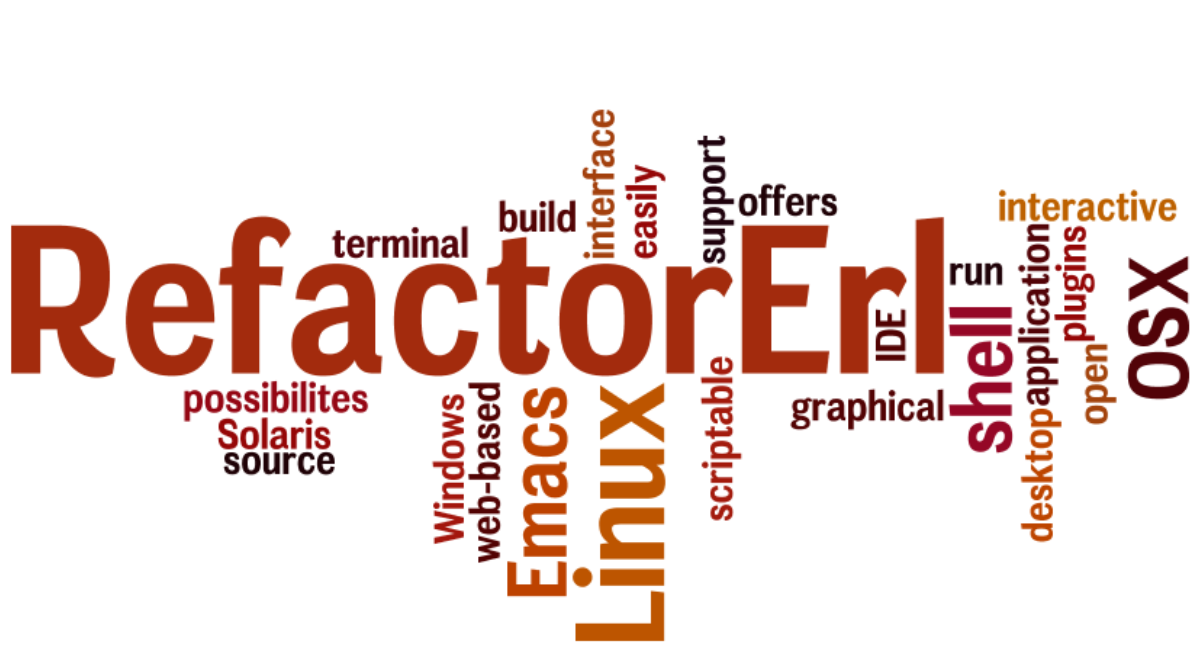RefactorErl has many fancy features which will
- shorten time-consuming daily jobs,
- make the possibility of better teamwork in different ways,
- reduce human faults,
- ease deploying releases,
- minimise the training time of newbies.
RefactorErl has many fancy features which will
Are you using Linux? Or OS X? Or Windows? May be Solaris? No matter! RefactorErl can be built and run easily under any of them.
Dou you fall in love with your Emacs editor? Or with Vi? Do you only like using terminal? Does not count! RefactorErl has many IDE plugins and also offers other possibilites, such as the web-based interface, the graphical desktop application, the interactive shell, the scriptable shell.
For our users delight we also keep a wiki site to help our users understand the main features of the tool and to guide their everyday use.
If you have questions, suggestions, bug reports, or feature requests, feel free to contact the developers.

The accured know-how is priceless and nobody likes to repeat herself/himself. We know that!
We also know that analysing industrial software is time and resource consuming. Therefore we made RefactorErl installable to a dedicated server and reachable by the entire team through the web interface.
The interface supports query construction and evaluation, interruption, result visualisation, database content management, dependency analysis, investigations, duplicated code detection, etc.

Whether the function references, the possible values of a variable, or the compliance with required coding conventions are needed to be checked, our semantic query language will answer your questions in a reasonable time.
The semantic query language is available from different user interfaces with additional features. For example, in the web-based interface there are a query construct assistant, and the ability to share, save, even comment queries.
According our latest user feedbacks, RefactorErl proved its usefulness again: Some users have shorten their 8 hours task to a half an hour by using the semantic query language to solve it.
Which modules (or packages, or functions) has to be also released with the main functionality at least to provide the proper software for the users?
RefactorErl can ease and make the deployment safetier by using its dependency analysis, which works on the built call-graph (based on function calls). Cycle checking and listing or relationship searching can be done by using dependency analises.